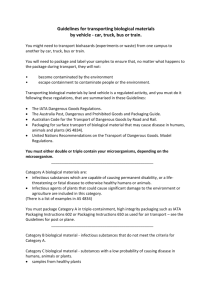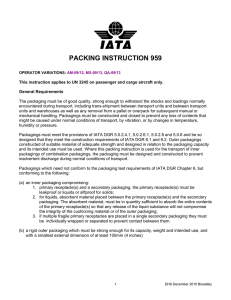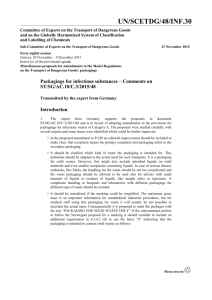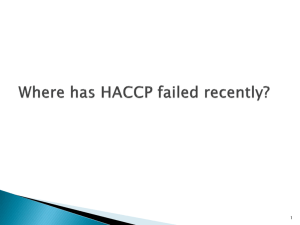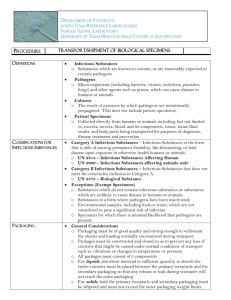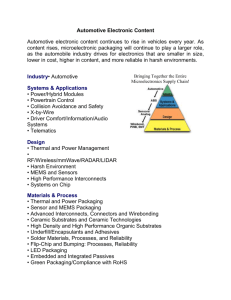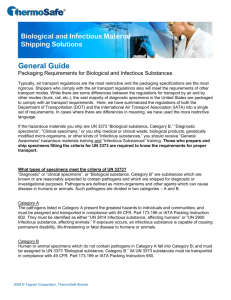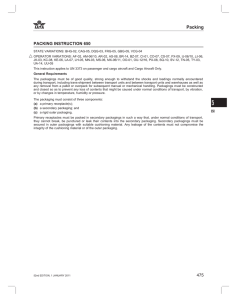Packing Instruction 620 (MS Word , 14kb)
advertisement
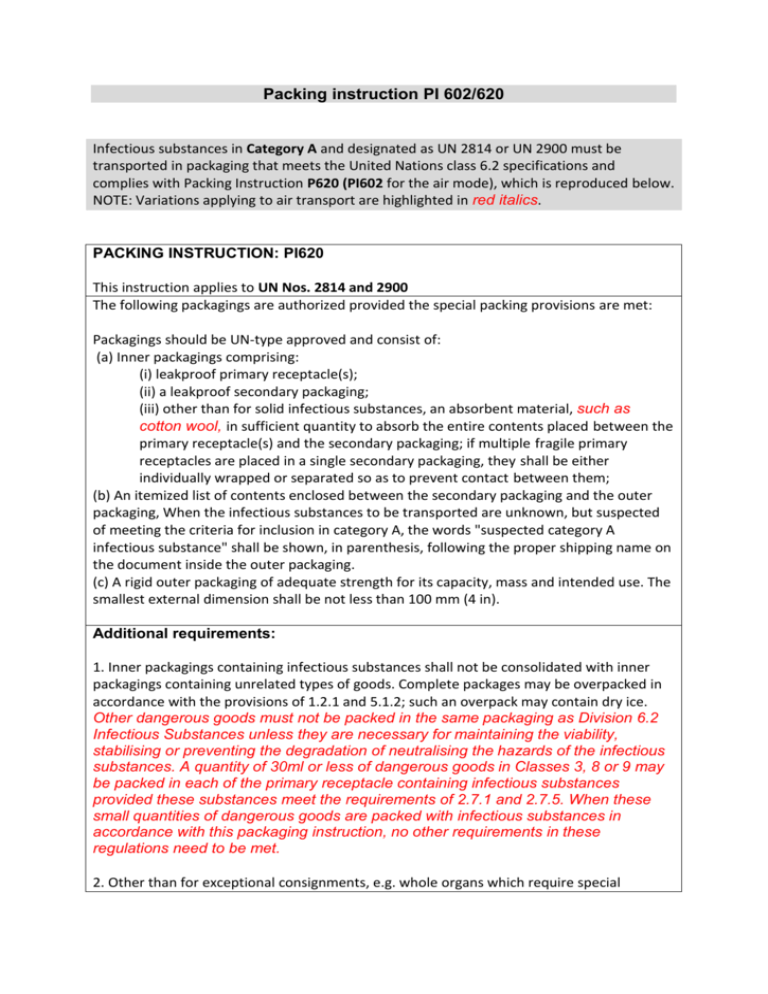
Packing instruction PI 602/620 Infectious substances in Category A and designated as UN 2814 or UN 2900 must be transported in packaging that meets the United Nations class 6.2 specifications and complies with Packing Instruction P620 (PI602 for the air mode), which is reproduced below. NOTE: Variations applying to air transport are highlighted in red italics. PACKING INSTRUCTION: PI620 This instruction applies to UN Nos. 2814 and 2900 The following packagings are authorized provided the special packing provisions are met: Packagings should be UN-type approved and consist of: (a) Inner packagings comprising: (i) leakproof primary receptacle(s); (ii) a leakproof secondary packaging; (iii) other than for solid infectious substances, an absorbent material, such as cotton wool, in sufficient quantity to absorb the entire contents placed between the primary receptacle(s) and the secondary packaging; if multiple fragile primary receptacles are placed in a single secondary packaging, they shall be either individually wrapped or separated so as to prevent contact between them; (b) An itemized list of contents enclosed between the secondary packaging and the outer packaging, When the infectious substances to be transported are unknown, but suspected of meeting the criteria for inclusion in category A, the words "suspected category A infectious substance" shall be shown, in parenthesis, following the proper shipping name on the document inside the outer packaging. (c) A rigid outer packaging of adequate strength for its capacity, mass and intended use. The smallest external dimension shall be not less than 100 mm (4 in). Additional requirements: 1. Inner packagings containing infectious substances shall not be consolidated with inner packagings containing unrelated types of goods. Complete packages may be overpacked in accordance with the provisions of 1.2.1 and 5.1.2; such an overpack may contain dry ice. Other dangerous goods must not be packed in the same packaging as Division 6.2 Infectious Substances unless they are necessary for maintaining the viability, stabilising or preventing the degradation of neutralising the hazards of the infectious substances. A quantity of 30ml or less of dangerous goods in Classes 3, 8 or 9 may be packed in each of the primary receptacle containing infectious substances provided these substances meet the requirements of 2.7.1 and 2.7.5. When these small quantities of dangerous goods are packed with infectious substances in accordance with this packaging instruction, no other requirements in these regulations need to be met. 2. Other than for exceptional consignments, e.g. whole organs which require special packaging, the following additional requirements shall apply: (a) Substances consigned at ambient temperatures or at a higher temperature: Primary receptacles shall be of glass, metal or plastics. Positive means of ensuring a leak-proof seal shall be provided, e.g. a heat seal, askirted stopper or a metal crimp seal. If screw caps are used, they shall be secured by positive means, e.g., tape, paraffin sealing tape or manufactured locking closure; (b) Substances consigned refrigerated or frozen: Ice, dry ice or other refrigerant shall be placed around the secondary packaging(s) or alternatively in an overpack with one or more complete packages marked in accordance with 6.3.1.1. Interior supports shall be provided to secure secondary packaging(s) or packages in position after the ice or dry ice has dissipated. If ice is used, the outer packaging or overpack shall be leakproof. If dry ice is used, the outer packaging or overpack shall permit the release of carbon dioxide gas. The primary receptacle and the secondary packaging shall maintain their integrity at the temperature of the refrigerant used; (c) Substances consigned in liquid nitrogen. Plastics primary receptacles capable of withstanding very low temperature shall be used. The secondary packaging shall also be capable of withstanding very low temperatures, and in most cases will need to be fitted over the primary receptacle individually. Provisions for the consignment of liquid nitrogen shall also be fulfilled. The primary receptacle and the secondary packaging shall maintain their integrity at the temperature of the liquid nitrogen; (d) Lyophilized substances may also be carried in primary receptacles that are flamesealed glass ampoules or rubber-stopped glass vials with metal seals. 3. Whatever the intended temperature of the consignment, the primary receptacle or the secondary packaging shall be capable of withstanding, without leakage, an internal pressure producing a pressure differential of not less than 95 kPa and temperatures in the range -40°C to +55 °C (-40 °F to +130 °F). 4. Alternative packagings for the transport of animal material may be authorized by the competent authority in accordance with the provisions of 4.1.3.7.

